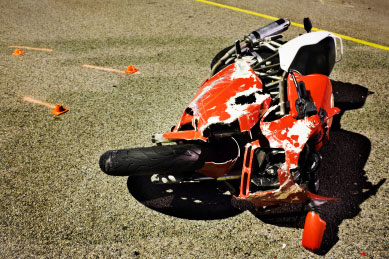Motorcycle Accident FAQs
How dangerous is riding a motorcycle?
So it is with motorcycles. Because they offer little protection during an accident, operating a motorcycle presents additional risks. Because motor bikes are heavier than bicycles and operate at greater speeds, naturally they are also more risky. Statistically speaking, motorcycles account for about 5 percent of all highway fatalities, even though they represent only 2 percent of registered vehicles.
Statistics should encourage riders to take every safety precaution possible when operating a motorcycle and when preparing to ride. A motorcycle is five or six times more likely to end up in a fatal accident than an automobile. Per mile traveled, it’s been estimated that a motorcycle is 35 times more likely to be involved in a fatality. Other studies claim serious injuries are 16 times more likely to occur in a motorcycle than an automobile. By comparison, motorcycles are about twice as likely to result in severe injury as bicycles.
How can a biker make a motorcycle’s presence known?
Experienced Illinois and Wisconsin bikers are familiar with many safety tips that can help automobile and truck drivers be more aware of a motorcycle’s presence on the road, and thus prevent the most common sorts of accidents:
- Avoid the blind spots of any vehicle, especially while passing
- Allow additional distances for reaction time and to act as a buffer for safety
- Travel with the headlight on at all times and with working lamps
- Use reflective gear and reflective tape
- Avoid dark clothing and equipment
- Tap brakes lightly while approaching a stop or when being followed by tailgaters
- Try to make eye contact with drivers near the motorcycle
- Use hand signals to alert drivers and other bikers
- Use staggered formations when riding in a group
- Try to avoid traveling if visibility is especially poor
- When necessary, use the motorcycle’s horn.


